Note: Yale School of the Environment (YSE) was formerly known as the Yale School of Forestry & Environmental Studies (F&ES). News articles and events posted prior to July 1, 2020 refer to the School's name at that time.
In 1984, the Yale School of Forestry & Environmental Studies launched the Tropical Resources Institute (TRI), an interdisciplinary program that supports and facilitates student research throughout the tropical world.
In the three decades since, TRI has sponsored more than 600 Fellows and their student research projects, and helped them publish their findings in the TRI Bulletin and other academic journals. And in so doing, it has helped launch hundreds of careers in tropical forestry across the planet.
To mark its 30th anniversary, we asked several distinguished former TRI Fellows to describe the work they did while they were students at Yale, share what they’re doing today, and reflect on how their experiences with TRI changed their lives.
Laly Lichtenfeld
Co-founder and Executive Director, African People & Wildlife Fund; National Geographic Explorer
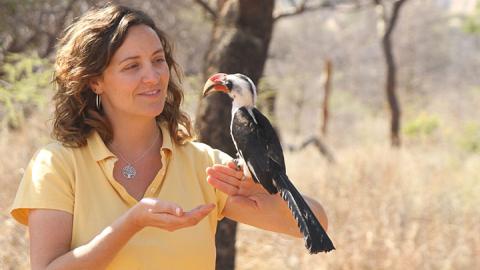
My work resulted in the first theoretical model of how people and African lions influence one another, emphasizing the abilities of each “culture” — feline and human alike — to affect one another via their respective tolerances. It was exciting to see that it isn’t just a one-way street. Practically, my research led me to discover a set of critical interventions that are needed to conserve lions in human-dominated landscapes. I also developed a more comprehensive and long-term approach to community-based conservation, emphasizing the critical importance of building the environmental knowledge and skills of rural people so that they can drive conservation forward in locally meaningful ways.
During my time at Yale, interdisciplinary studies were just beginning to take off. In fact, Yale F&ES was the only school that encouraged me to focus equally in two disciplines when I was pursuing a home for my doctoral studies. This has been tremendously important for my career, and I’ll never forget what a privilege it was to be at Yale.
After receiving my doctorate in 2005, I co-founded the African People & Wildlife Fund in order to put into action some of the practical findings of my work. Today, nearly 10 years later, our team has cemented the African People & Wildlife Fund’s position as a leading conservation organization in East Africa, distinguished by our unique, four-step approach to community-driven conservation. Our project portfolio includes programs in four major areas: wildlife conservation, environmental education, natural resource management, and conservation enterprise. We have also developed one of the most effective conservation interventions for African lions on the continent: Living Walls, environmentally friendly livestock enclosures, are 99-percent successful in protecting livestock from lion, leopard, and hyena attacks, and therefore dramatically reduce human retaliation (spearing, shooting, poisoning) against these magnificent large carnivores.
I am also still a visiting Fellow at F&ES, so though my work took me across the globe, I guess I never get too far away from Yale.
Hugh Raffles
Professor of Anthropology, The New School, New York City; Director of the School's Graduate Institute of Design, Ethnography & Social Thought
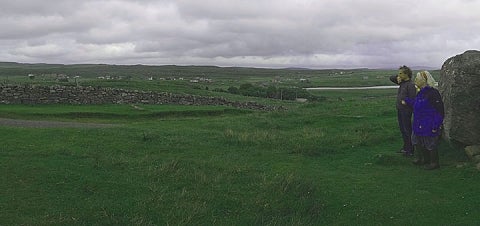
At the time [the mid-1990s], researchers were building a new picture of Amazonia as a region strongly affected since pre-Columbian times by large-scale and generally positive human impacts on the landscape. I was very interested in this as a counter-weight to the idea of Amazonia as an untouched wilderness and of people’s presence there as either destructive or adaptive. I started to understand the region as full of the intersecting activities of many kinds of beings and things — people, animals, plants, water, soils, weather, etc. This very simple and rather banal insight has been central to my work ever since.
Having the chance to spend such a long period of time in somewhere so outside my previous experience as the Amazon — I’m from London and a very urban person — was the most important. But the daily interchange with other students with very different interests, backgrounds, and expertise in a generous and supportive environment was formative for me in many ways.
I now teach anthropology at The New School and am director of the university’s new Graduate Institute of Design, Ethnography & Social Thought, a project that owes more than a little to Jim Scott’s Program in Agrarian Studies at Yale, with which I was closely involved during my time at F&ES. Research-wise, my years at Yale seem to have set my agenda as I’m still writing about relations between humans and the rest of nature! After the Amazon, I wrote a book about people and insects; now I’m halfway through one about rocks and stones. I choose topics that let me explore material I don’t yet understand, so am constantly learning and experiencing new things. I feel very lucky!
Steve Rhee
Program Officer for Natural Resources, Ford Foundation
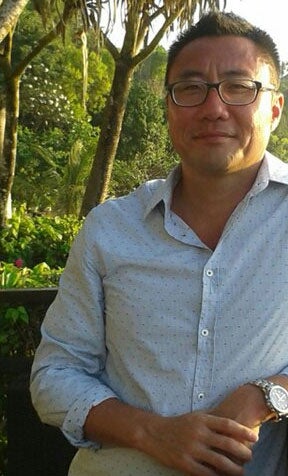
Forging linkages based on empathy is one of the central principles to successfully achieving sustainable and equitable forestry management. Bridging research and policy, field realities and institutional realities, different institutional contexts, and different cultural contexts, and translating/articulating all of that so that everyone sees themselves and benefits for themselves in the work is essential.
I was at Yale for both my M.E.Sc. and Ph.D., and hence the memorable experiences are many. The most memorable is the passion, commitment, and compassion/empathy of students and faculty, which manifested in a tireless willingness to help. I drew upon that energy to see me through my research and writing for both my Master’s and doctorate.
For the past five years, I have worked for the Ford Foundation in Indonesia as a program officer, managing the foundation’s program on expanding community rights over natural resources. The Ford Foundation’s mission is advancing social justice. Through my work at the Foundation, I am also a member of the multi-foundation Climate and Land Use Alliance (CLUA), which brings together diverse, complementary perspectives to help identify and support land use policies and practices that mitigate climate change, benefit people, and protect the environment. Prior to joining the Foundation, I worked as a trade officer for two years in the U.S. Department of State responsible for trade-related labor and environment issues.
John Parotta
National Research Program Leader, International Science Issues, U.S. Forest Service

My years at Yale were memorable for the close friendships developed with a number of those I studied and lived with, the interest and support of professors who were closely involved with TRI, as well as the “sink-or-swim” philosophy of some of my committee members towards the often very challenging Ph.D. research experience, which (eventually) taught me the value of independent thinking, patience, and perseverance.
Following my studies at Yale, I returned to San Juan to work as a research scientist for a few years at the University of Puerto Rico before joining the U.S. Forest Service, where I worked for another 10 years at the International Institute of Tropical Forestry. My years with the Institute enabled me to continue my forest restoration studies in Puerto Rico and begin new work on this and other topics (such as traditional forest knowledge) in Brazil’s eastern Amazon and Mata Atlântica regions and in India.
Since 2001 I have been based in the Forest Service’s headquarters in Washington D.C., providing scientific and technical advice for the development of U.S. policy positions in a variety of international forest-related fora, including the Convention on Biological Diversity, the UN Forum on Forests, and the Intergovernmental Science-Policy Platform on Biodiversity and Ecosystem Services (IPBES).
Though not actively engaged in field research, I have maintained and expanded my collaboration and publication of scientific syntheses on a variety of topics and issues with scientists worldwide. Much of this work has been through the International Union of Forest Research Organizations (IUFRO), in which I have been very active since 1993 in a variety of roles. In recent years I coordinated development of the scientific programs for the last two IUFRO World Congresses (2010 in Seoul, and 2014 in Salt Lake City), participated in three IUFRO-led Collaborative Partnership on Forests’ Global Forest Expert Panels since 2008, and led the IUFRO Task Force on Traditional Forest Knowledge (2005-2011).
Krithi Karanth
Conservation Scientist, Wildlife Conservation Society and the Centre for Wildlife Studies (India); Adjunct Assistant Professor, Duke University
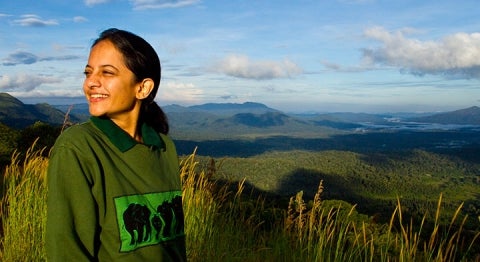
The second project surveyed families from 11 villages who were voluntarily being relocated outside the park. After examining the experience for 419 households during two separate relocations, in 2002 and 2006, I found stark differences between the two different- resettlement villages, with one of them faring better in terms of economics, hardships, and uncertainty. Successful conservation resettlement requires substantial financial support to meet people’s socio-economic needs, active consultation of the people involved, and partnerships of committed non-governmental and governmental organizations.
My career defining moment came during my fieldwork in Bhadra, during my master’s work at Yale. Having grown up exploring forests of India with my father Ullas Karanth [a well known tiger biologist and conservationist], I had an extraordinary albeit unusual childhood. I got to spend hours watching animals and exploring wonderful places. The hardships he faced as a scientist and conservationist made me decide as a teenager not to pursue a similar career in wildlife.
During my master’s I found myself designing a field project that required me to do field work in Bhadra. A car accident on the second day of fieldwork resulted in a cracked kneecap and I was distraught. For me this meant that the project I spent months designing, obtaining funding and permission for was over. I was determined to complete this project. A month later I hobbled back resolutely, walked transects in pouring rain through rugged mountainous terrain — and getting bitten by leeches — to collect data. Though physically painful and mentally challenging, the three months I spent in this park re-ignited my childhood passion for wild nature and I made a decision to become a conservation biologist.
I am now a conservation scientist working with Wildlife Conservation Society and the Centre for Wildlife Studies (India). I also hold adjunct faculty positions at Duke University and National Centre for Biological Sciences and am an Explorer with the National Geographic Society. Over the past 16 years, I have worked in thousands of villages and explored many wild places in India. Every field experience reinforces my belief that we still have a lot to protect and every conservation battle matters.
Whendee Silver
Professor of Ecosystem Ecology, University of California, Berkeley
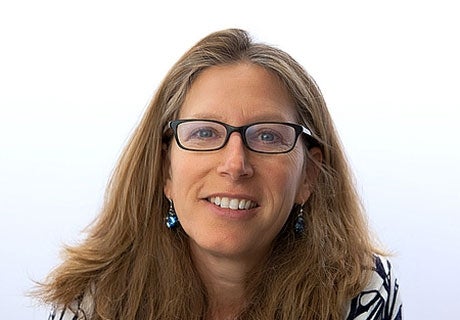
The Costa Rica experience helped me refine my interests in biogeochemistry (as opposed to community ecology and social science, which were other interests I could explore at CATIE). The Puerto Rico research allowed me to really delve in detail into how ecosystems function.
There were many memorable experiences at Yale. Working with Tom Siccama was a highlight, especially getting to work with him in Puerto Rico — which of course he said was just like Connecticut, only different. I also remember Herb Bormann calling my thesis research “Hubbard Brook South.”
I am an ecosystem ecologist/biogeochemist/tropical ecologist on the faculty at UC Berkeley. I still work in Puerto Rico and contribute to and run some large research projects there. My time at Yale was instrumental in helping me get to where I am today.
Pradeep Kurukuliasuriya
Head, Climate Change Adaptation, UN Development Programme – Global Environment Facility
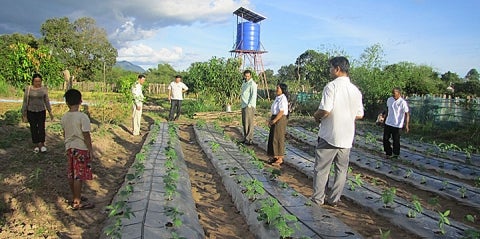
The research I undertook at the time first made a methodological advance in how one could model adaptation to climate change to better understand the likely economic implications on choices that individual farmers make. Secondly, the research provided an insight into how African farmers are likely to be affected in terms of economic damages under alternative climate change scenarios.
Overall, it was a wonderful and rewarding experience that will remain with me for the rest of my life.
I think that my research at Yale played a huge part in getting a shot at a consulting gig at the United Nations Development Programme in 2005. At the time, it was my way of testing whether teaching was what I wanted to go into or whether I wanted to immerse myself in development work. It happened to be when UNDP itself was starting its very first set of adaptation projects that had a budget of about $9 or $11 million. I remember thinking, “This is it! I’ve made it! Could it get any better?!” Well, it did, and that opportunity turned out to be just the beginning. Those projects were the starting point of an amazing and yet very humbling journey.
Over the last nine years, I have had the incredible opportunity to start from the bottom and work up to building a fantastic team of professionals from around the world — and that I consider part of my family — to help people adapt to climate change. Working in partnership with the Global Environment Facility and others, we have supported more than 120 countries around the world in taking important steps toward building up their governance, financial and institutional structures and systems, as well as their technical capacities to manage the uncertainty of climate change. More than $800 million of grant money, while not a lot when considering the issues at hand, have nevertheless been made available to countries to take key steps to adapt. While we are now proudly the largest UN agency in terms of delivering finance and technical assistance to countries on adaptation, the work is only starting.
Linwood Pendleton
International Chair of Excellence, European Institute for Marine Studies; Senior Scholar, Duke University

The Bonaire Marine Park was closed because park managers believed that divers would not pay a $20-per-year entrance fee. We showed that divers around the Caribbean were willing to pay for better coral reef ecosystems and in amounts that were 50 times bigger than the proposed park fee.
F&ES Dean [Jared] Cohon went out on a limb and helped create the “Caribbean Coastal Policy” course that Gabe Benoit and I designed. The course helped ground me solidly in fieldwork and helped me get to know master’s students in a way that was not always easy for a doctoral student.
Before I graduated from F&ES, I took a job at USC and then UCLA in southern California. Since then I’ve worked as the Director of Economic Research at the Ocean Foundation, Director of Ocean and Coastal Policy at Duke’s Nicholas Institute, and served as Chief Economist of NOAA. Now, I'm the International Chair of Excellence at the European Institute for Marine Studies (in Brittany, France) and Senior Scholar at Duke University.
Uromi Goodale
Associate Professor, State Key Laboratory of Conservation and Utilization of Subtropical Agro-bioresources, College of Forestry, Guangxi University, Nanning, China
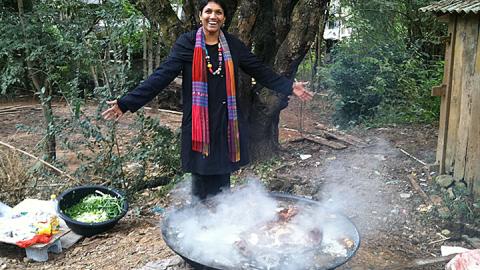
I found that pioneer species are distributed along disturbance gradients, from large scale and less frequent ones such as landslides to small scale and more frequent ones like 1-3 treefall gaps. I also found that herbivorey determines pioneer species distribution and limits their ability to survive in shade.
I have completed a postdoctoral study at UCSD with Dr. Elsa E. Cleland focusing on the physiology of chaparral and coastal sage plants and this was funded by the National Institutes of Health through a specialized program titled IRACDA (Institutional Research and Academic Career Development Award). This award is designed to train young scientist to not only become professionally efficient in their research but also to teach and train young scholars from diverse backgrounds. As such I taught undergraduate students at San Diego State University. After this post doc, I joined Dr. Cao Kunfang's research group focused on Plant Eco-Physiology at the Chinese Academy of Sciences. There my focus was on the ecological physiology of tropical seed germination and seeding regeneration. This research was funded by the Chinese Academy of Sciences and the China National Post Doctoral Fund. From September 2014, I have begun a new position as an Associate Professor at the State Key Laboratory of Conservation and Utilization of Subtropical Agro-bioresources in the Plant Physiological Ecology and Evolution Group, College of Forestry at Guangxi University in Nanning, China.
During my time at F&ES, Drs. Mark Ashton, Graeme Berlyn and Timothy Gregoire changed me from being an enthusiastic student to a trained professional in the fields of forest ecology and management and plant physiological ecology. Yale will always be my home institution although I have graduated and left.
Tina Schneider
Associate, World Resources Institute, Forest Legality Alliance
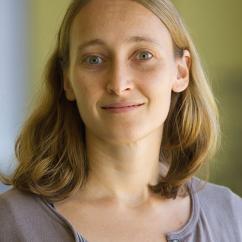
I found that the trees in many of the 25 smallholder sites established between 1995 and 2000 survived. While exotics are often believed to outcompete native timber trees, the fastest growing native species had mean annual diameter and height increments that were statistically similar to the most widely planted exotic tree, mahogany (Swietenia macrophylla). The data further showed that community-led reforestation efforts can work, and that dipterocarps can successfully be used in restoration of degraded grasslands in the Philippines.
For me, field-based learning was the key to bringing together the different analytical methods and management philosophies we learned about in class. Our week-long tropical botany field trip in Costa Rica, our two-week long field trip to study indigenous and conventional tropical silviculture in southeast Mexico, summer forest crew at Yale Myers, and trips to Maine, Louisiana, and the Pacific Northwest provided me with the necessary frame of reference for assessing forest policy and management questions.
After graduating from F&ES, I relocated to Laos to conduct research into communal land tenure and community forestry through a Fulbright research grant. After finishing that project, I stayed in Laos to work on timber legality projects for the NGO TRAFFIC; and Chatham House, conducting a study on the impacts of timber legality verification on smallholder timber producers.
Earlier this year, I returned to the U.S. to work for the World Resources Institute’s Forest Legality Alliance, a public-private partnership aiming at increasing the amount of legally sourced timber in global markets. We bring together private sector, NGOs, and government actors to discuss challenges in bringing more transparency into forest product supply chains, we support the development of emerging timber tracking and forest monitoring technologies, and we work on case studies and research projects related to forest products and timber legality.
My most memorable experience at F&ES was a trip to a community-managed protected area in the Philippines. My fellow F&ESer Erica Pohnan and I hiked up a river with a group of local farmers, who were repairing a community-run patrol cabin underneath the highest peak on the island of Leyte. The farmers showed us some of the last remaining native dipterocarp forest on the island, with enormous old growth “mother trees,” from which the community collects seeds and seedlings for reforestation sites. We stayed in the patrol cabin, in a foggy, incredibly lush rainforest, saw monkeys and hornbills through the window, ate delicious mung bean stew and practiced cooking Filipino food. Those two days offered a unique opportunity to get to know this community in a more informal way than the usual interviews with field assistants.
William Collier
Ph.D. Student, Clark University, Worcester, Mass.
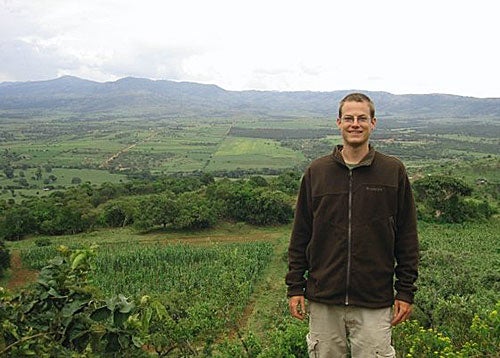
I conducted my M.E.Sc. research in Kenya’s Rift Valley Province, just north of the small agricultural town of Eldoret. I also spent several weeks in Nairobi interviewing government officials and collecting archival data from the Kenya National Archives. My research focused on the ways in which climate variability influenced agricultural development in the Rift Valley, with special interest on the underlying ideological frameworks that led to the development of contemporary cash-crop agriculture in the region.
In my research, I argue that moral ideologies imported by Christian missionaries – in concert with prevalent environmental degradation discourses evoked by the colonial government and settlers – had profound influences on agricultural development in the Rift Valley. I suggest that this agrarian history may limit future strategies for climate change adaptation in Kenya’s agricultural sector. Furthermore, I suggest that arguments about the weather between colonialists and local populations are based in a specific moral framework that is antecedent to, and revelatory of, current debates about global climate change. Taken together, these factors have contributed to the dispossession of land from local populations and the continued conflicts over resources in the Rift Valley of Kenya.
My most memorable experiences at Yale fall, mainly, into two categories: (a) my interactions and relationships with members of the F&ES community, and (b) the tremendous resources available at Yale, especially the Beinecke Rare Book and Manuscript Library. The former was, of course, the cornerstone of my experience at Yale. It was an honor to be surrounded by so many passionate, brilliant, and caring people at Yale, who collectively and individually shaped my worldview. Here, I must make special mention of my advisor, Michael Dove, who has fundamentally influenced the current trajectories of my academic and professional careers. To the latter point above, as we all know, one could get lost in the endless stacks of books, manuscripts, and other resources scattered throughout the many libraries on campus.
After graduating from F&ES in 2010, I worked for several years at the International Food Policy Research Institute in Washington, D.C. This was a rewarding experience through which I was able to continue learning about theory, methods, and practice in development studies. I’m currently a doctoral student in geography at Clark University’s Graduate School of Geography in Worcester, Mass. I’ve continued similar lines of research and academic training from my time at F&ES, and the focus of my dissertation research is broadly situated in the field of political ecology, with a focus on resource-use conflicts and displacement in Kenya.
Queenborough Takes Lead at TRI